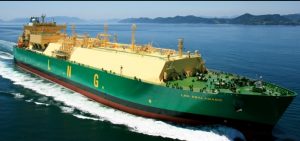
Launceston, Australia — The comfort that had characterised natural gas markets in Asia and Europe in recent months was shown to be a mere illusion by the threat of strike action at three major Australian liquefied natural gas (LNG) plants.
In the blink of eye, a market that had looked well supplied and relaxed was turned into a flighty wreck, with prices jumping higher on only the possibility of unspecified labour action at LNG plants operated by Woodside Energy and Chevron in Western Australia state.
But the impact of the strike threat at gas fields that feed the Woodside-operated North West Shelf LNG plant, Australia’s largest, and at Chevron’s Gorgon and Wheatstone operations was more keenly felt in Europe.
The front-month contract ended at 39.85 euros per megawatt hour (MWh) on Aug. 10, equivalent to about $12.82 mmBtu and a two-month high.
The price eased back to end at 35.99 euros per MWh on Aug. 11 as fears eased over how imminent a strike was at the Australian plants, which together account for about 10% of global LNG supply.
But even the hint of a threat to supplies was enough to spook markets, a reminder that nerves can easily be unsettled in the aftermath of last year’s surge in LNG prices as Russian pipeline gas flows to Europe were curtailed following Moscow’s invasion of Ukraine.
The bulk of the LNG produced at the three plants heads to Japan and South Korea, but a full outage would have serious ramifications as utilities in those two countries would be forced to scramble for spot supplies from elsewhere.
Japan is the world’s top importer of the super-chilled fuel, and South Korea ranks third behind China.
Australia vies with Qatar and the United States as the top supplier of LNG, although expansion plans for the latter two will see them overtake Australia in coming years.
ASIA IMPORTS GAIN
The strike threat at the Australian plants comes as Asia’s LNG demand starts to tick up, as it usually does ahead of peak seasonal demand in the northern winter.
Asia’s imports rose to 21.59 million metric tons in July, up from 21.29 million in June and the most since February, according to data compiled by commodity analysts Kpler.
August arrivals are expected to increase further with Kpler assessing Asia imports at 21.90 million metric tons so far, a figure that may be revised higher as more cargoes are tracked.
Europe’s LNG imports in contrast have been trending lower as the continent’s natural gas storages remained elevated and demand shifts structurally lower as countries move to reduce reliance on fossil fuels.
Europe’s imports in July were assessed at 8.77 million metric tons, the lowest since August last year when arrivals were also 8.77 million.
August imports are assessed at 7.65 million metric tons, putting them on track to be the lowest since November 2021, according to Kpler data.
Overall, it seems the demand side of LNG is witnessing a seasonal uptick in Asia combined with an easing in Europe as the energy crisis sparked by the Russian attack on Ukraine fades.
However, as last week’s price action shows, the LNG market remains vulnerable to even the suggestion of a supply shock.
The opinions expressed here are those of the author, a columnist for Reuters.
By Clyde Russel
Follow us on twitter



